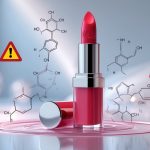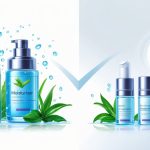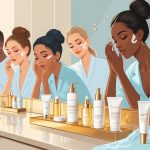Dermatologist-Backed Ingredients Suddenly Reshaping Daily Routines
Ethical Practices and Ingredient Transparency
Here’s what drives me nuts: everyone shouts about niacinamide, bakuchiol, ceramides, but ask where their palm oil comes from and suddenly it’s radio silence. It’s not just about the latest “active”—who’s making the calls behind the scenes? Are they greenwashing, or just hiding the ugly bits behind pastel labels?
Evaluating Ingredient Sourcing and Sustainability
I stare at my bathroom shelf and realize: I have zero clue where most of this stuff comes from. Do brands even know? Sometimes there’s a Fair Trade sticker, sometimes just vague “clean” claims. I’m the nerd who checks EWG’s Skin Deep (even though, honestly, their ratings are a mess—one derm said water could get a 4).
Now everyone’s shouting about “transparency” because “clean” is meaningless. I bought a serum with blockchain-tracked vitamin C from Peru. Is that legit? No idea. Probably just a fancy sticker. Some brands try hard (see this report), but most just slap “no nasties” on the box and call it a day.
And don’t get me started on sustainability. Retinol might fade spots, but if it’s cooked up from petrochemicals and shipped in bubble wrap across three continents, what’s the point? A formulator once told me, “Maybe 5% of brands know their supply chain.” Five percent! Could be total nonsense, but who’s checking?
How to Choose Products With Integrity
If only “vegan” or “cruelty-free” meant anything. Brands can still hide sketchy stuff in the fine print. When I look for new products, I dig for ingredient lists, third-party testing, maybe a fair labor badge if I’m lucky.
But let’s be real: “Transparency” doesn’t guarantee anything. Some brands just dump a giant chemical list online but skip how their squalane’s made (hint: sugarcane is best, but who knows). “Accountability culture” is the new buzzword—means everything and nothing. Could be carbon-neutral boxes, could be cruelty-free, could be just a hashtag (see here).
If you’re as stubborn as me, just email the brand and ask for receipts. Most ignore you, but that silence is its own answer. Pro tip? Call a third-party lab like Innacos—number’s on their contact page. I did, and an actual scientist (not a bot!) talked preservatives with me. Wild.
Frequently Asked Questions
Scrolling doom spiral: niacinamide or peptides? Every influencer has a new answer. My derm just says, “Keep it simple.” Like that’s possible.
Which scientifically proven ingredients should I look for in skincare products?
Vitamin C, but only if it’s in a dark bottle—otherwise it’s brown goo. My derm claims retinaldehyde is faster than retinol, but good luck finding it. Niacinamide over 10%? Feels like overkill. Sunscreen’s still the only thing everyone agrees on—Dr. Robinson says use it daily for 80% less aging, but I forget my ears every time. Hyaluronic acid? No one agrees if it’s magic or just marketing.
What are the signs that a skincare ingredient is truly beneficial?
No burning. No weird rash (unless it’s acid night, then who knows). Sometimes my skin’s suspiciously soft after a new serum, but is that placebo? Probably. Dermatologists say “wait 6-12 weeks,” but I expect miracles by week two. If it doesn’t clog, pill, or sting, maybe it’s just overpriced lotion. I once thought a fungal acne flare was “purging.” Never again.
How can I tell if a new skincare product is working for me?
I take before/after selfies in gross bathroom light. Feels silly, but otherwise, who knows? Dermatologists apparently just “observe,” like skincare spies. I never know if a breakout’s a purge or just bad luck—derms say simple routines work best, but I still chase trends. Sometimes I use four spot treatments on one pimple, just to “help” the experiment. Spoiler: nothing worked.
Are there any new breakthrough ingredients in dermatology I should be aware of?
Bakuchiol is everywhere—plant retinol, supposedly. My derm side-eyes anything without a big clinical study. Peptides? They rebrand every year, same old formula, fancier bottle. Microbiome skincare is the new hype, but all I notice is my wallet getting lighter. Azelaic acid gets called “new” if it’s in a foam. Marketing, man.
What steps should I follow to introduce a new ingredient into my skincare regimen?
Patch testing—supposedly crucial. I skipped it once, got raccoon eyes, FaceTimed my derm in a panic. “Go slow,” they say, but sometimes I layer three acids because TikTok said so. Always told to “moisturize after,” which I forget if I’m tired. Some nights I just slap on a sheet mask and hope for the best. No idea if it helps.
Can you debunk common myths about skincare ingredients?
Chocolate causes acne? Nah, not buying it. I mean, if it did, maybe I’d finally have a solid excuse for my face looking like a pizza some days—except, no, apparently it’s not that simple. Dermatologists keep saying diet only “sort of” matters (whatever that means, thanks for nothing CNN link). So, should I eat more kale or just accept my fate? Who knows. And don’t even get me started on “clean” labels. Saw a $150 “clean” moisturizer destroy three people’s faces in real time. They looked like they lost a fight with a beehive. “Clean” doesn’t mean gentle, just means someone paid a branding intern. Also, expensive gadgets? Waste of time. Honestly, gentle cleansers do more for my skin (and my wallet) than any of those weird LED masks or vibrating spatulas ever did (source, if you care). My uncle swears by plain old Vaseline. Never used snail slime, never bought a serum, face is still weirdly smooth. Seriously, what’s the secret? Genetics? Petroleum jelly? I give up.



